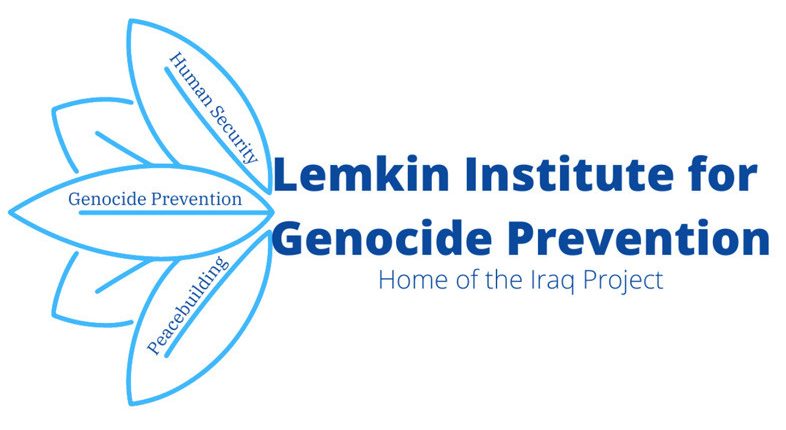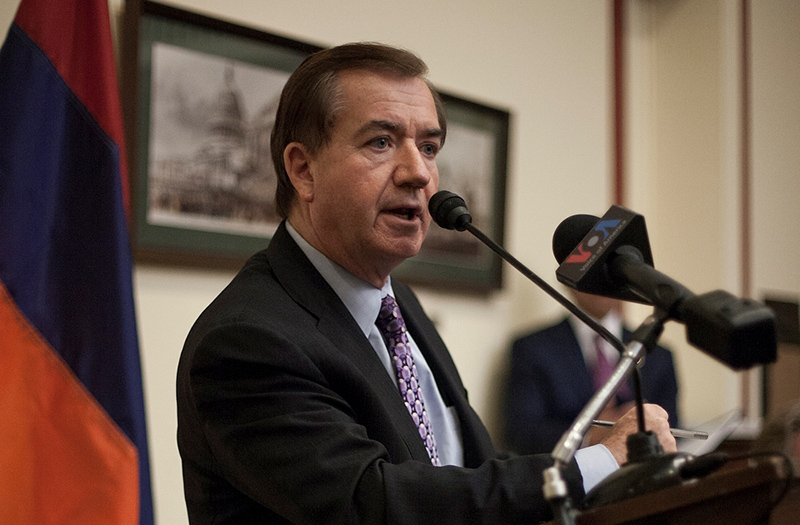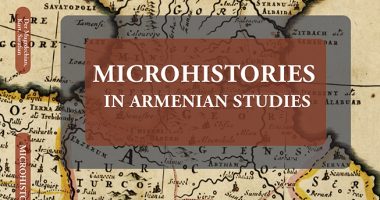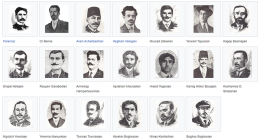The Lemkin Institute of Genocide Prevention, a US-based non-governmental organization, has expressed deep disappointment with a recent United Nations mission to Nagorno-Karabakh (Artsakh), following an Azerbaijani invasion and the forced displacement of the region’s Armenian population.
The Institute called for a more comprehensive and impartial assessment of the situation in Nagorno-Karabakh, criticizing the timing, brevity and transparency of the mission.
Below is the full text of the statement:
The Lemkin Institute of Genocide Prevention is disappointed with the outcome of the UN mission’s visit to Artsakh (Nagorno-Karabakh) on October 1, which took place after the entire Armenian population of Artsakh had already fled due to forcible displacement following the recent Azerbaijani invasion. It is difficult to understand what the purpose of such a mission was and why there was never more pressure for Azerbaijan to allow a mission into Artsakh during Azerbaijan’s 9-month blockade of the region that led up to the invasion. If the United Nations is not going to take genocide seriously, it would be better if it sent no missions at all to regions that have experienced genocide.
According to the UN, “the mission aimed to assess the situation on the ground and identify the humanitarian needs of both the people remaining and those who are on the move”. Despite the complex purpose of this visit by the mission, the assessment itself and the statement on the outcome of that assessment were completed within one day, begging the question of just how seriously the UN mission could have taken the task of an assessment on the ground. It is worth mentioning that this was the first UN visit to the region in 30 years.
Prior to this visit, concerns about the consistent political insecurity of Armenians in Artsakh and threats to the Armenian population within the region had been raised several times within UN bodies. Two UN Security Council meetings were convened on the topic of ongoing threats to the Armenians of Artsakh (on August 16, regarding the full blockade imposed on the Republic of Artsakh by Azerbaijan, and on September 21, regarding the Azerbaijani military attack on the Armenian population in Artsakh). In both meetings, the majority of the Security Council’s member states condemned Azerbaijan’s actions, stating that they posed a threat to the security and well-being of the region’s Armenians and discouraged any peacemaking efforts in the region. In addition to these condemnations, the International Court of Justice has ordered Azerbaijan on two separate occasions (on February 22 and July 6, 2023) to reopen the Lachin Corridor—the humanitarian route connecting the Republic of Artsakh with Armenia. All statements and ICJ orders have been ignored by Azerbaijan.
The Lemkin Institute has issued multiple Red Flag Alerts for Azerbaijan since the Lachin Corridor was blockaded in December 2022, as well as an Active Genocide Alert and SOS alerts indicating an extremely high risk of genocide for the Armenians in Artsakh. Given the UN representatives’ clear knowledge of the risks to the Armenian population in Artsakh (as demonstrated by the convening of two Security Council meetings on the topic), it is very surprising to us that the mission would visit this region only after the end of the Azerbaijani offensive and after the exodus of more than 100,000 Armenians from the former Republic. The fact that Azerbaijani President Ilham Aliyev donated USD $1 million to the UN Human Settlements Program on September 30—just one day prior to the mission’s deployment to Nagorno-Karabakh—only increases our concerns regarding the honesty and transparency of the mission.
In examining the mission’s operation and statement, we found numerous controversial points. First, the mission arrived in the region only after the end of the bloodshed and exodus of the Armenians, and it only lasted only one day. In the briefing by Stephanie Dujarric, spokesperson for Secretary-General Antonio Guterres, it was stated that “they [the members of the mission] got to see quite a bit”. However, in the context of a full-blockade, followed by military invasion and ethnic cleansing, 24 hours alone is certainly not sufficient to adequately assess the situation on the ground. Second, the information on the number of Armenians remaining in Artsakh (from 50 to 1,000) contradicts the numbers given by the former Ombudsman of Artsakh, Artak Beglaryan, who has argued that there are not more than 40 people remaining in the region at the moment. And third, as for the text of the statement itself, the UN visited certain unspecified parts of the city of Stepanakert, where it “saw no damage to civilian public infrastructure, including hospitals, schools and housing, or to cultural and religious structures”. However, there is verifiable photographic evidence of the destruction of civilian infrastructure in the city of Stepanakert, as it was bombed by Azerbaijan during its military offensive. In addition to this limited access to Stepanakert, the team visited Agdam City—which was under Azerbaijani control and uninhabited by Armenians, and therefore not crucial for the agenda—and the Lachin Corridor, which was surveyed after the entire population had been forced to flee. It is notable that the UN mission failed to include any representatives from the Armenian mission to the UN, and it did not visit the Syunik region to speak with Armenian refugees who were forced to leave Artsakh. The concluding statement is extremely vague and uninformative.
With all of this said, the Lemkin Institute considers the operation of the mission to be unsuccessful, as it failed to accurately present or assess the reality of the situation in the Republic of Artsakh. We strongly believe that undertaking the “mission for the sake of a mission” and making a “statement for the sake of a statement” are not adequate responses to situations as serious and as dangerous as what has unfolded in the South Caucasus. We question the scruples and integrity of this mission. The vague operating principles and assessments of the UN mission, which lacked any specific goals, methodology, or recommendations, severely risks undermining the trust that the international community collectively places in the work of the United Nations.
The Lemkin Institute calls on the UN to prepare a proper mission to the Republic of Artsakh, one that is inclusive of international team members from countries neutral to the conflict to conduct a thorough analysis of the current situation on the ground. This reality, which is the result of a conflict that has endured for three decades, cannot be assessed in one day. In order to ensure the rights of the Armenians in Artsakh, the UN must act with professionalism, impartiality, and commitment to the values presented in the UN Charter.










